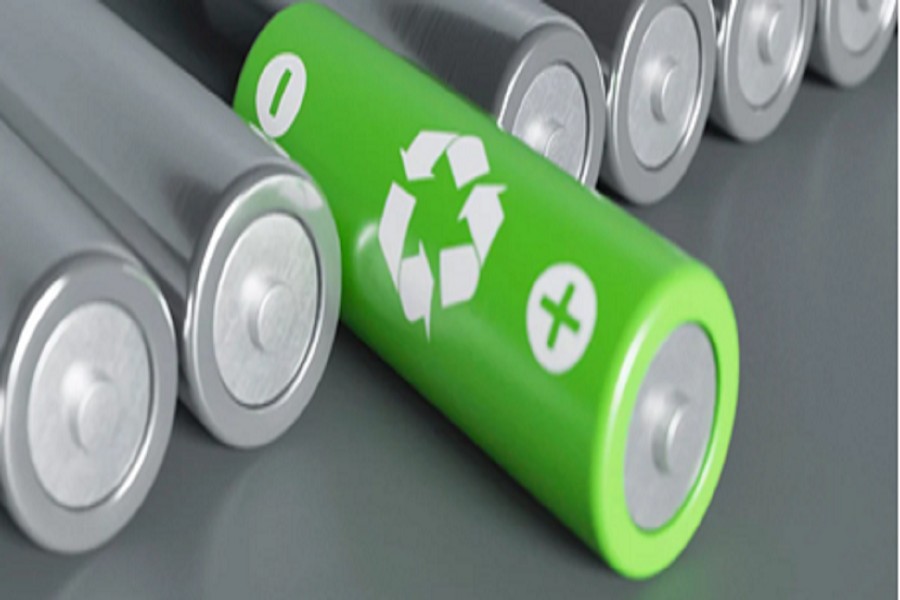Revolutionizing Lithium-Ion Battery Recycling
What Is A Lithium-Ion Battery And How Does It Work?
The most common commercial type of rechargeable battery is the lithium-ion (Li-ion) battery, which is extensively utilized in electrified vehicles and portable gadgets. Lithium atoms in the anode become ionized and lose their electrons during a discharge cycle. After leaving the anode and traveling through the electrolyte to the cathode, the lithium ions recombine with their electrons to produce an electrical neutralization. Because of their small size, the lithium ions can pass between the anode and cathode through a micro-permeable separator.
Various materials used as electrodes in Li-ion batteries but when it comes to commercial portable electronic devices like laptops and cellphones, the most popular combination is that of graphite (anode) and lithium cobalt oxide (cathode). Other common cathode materials are lithium iron phosphate and lithium manganese oxide, which are utilized in electric and hybrid cars. The electrolyte of Li-ion batteries is usually ether, a class of organic molecules.
Environmental Impacts of Lithium-Ion Batteries
One benefit of storing energy in lithium-ion batteries is that it can help us reach sustainability targets related to energy consumption. For example, it can reduce our dependency on fossil fuels and increase our usage of renewable energy sources and lithium-ion batteries. Nevertheless, there are a number of disadvantages associated with these benefits across the battery’s supply chain.
Intensive extraction: Open-pit mining and brine extraction are the two mining techniques that are frequently used to collect minerals for batteries. Pollution and erosion may result from these extraction techniques.
Open-pit mining: Vegetation needs to be removed to create room for an open pit. A deep trench is then excavated. When combined, these elements foster erosion. High quantities of heavy metals in dust and poisonous soils can result from mining. These dusts turn into pollutants that increase the risk of disease in both humans and animals.
Brine extraction: This method removes water from naturally occurring subterranean drinking water sources. The ecosystem is losing this water more quickly than the water cycle can replenish it. Toxic chemicals are also needed for brine extraction in order to treat lithium. These pollutants’ discharge degrades the quality of the land, water, and air.
Electronic waste: Lithium-ion batteries, sometimes referred to as e-waste, are produced when they are disposed of. A large amount of electronic trash is disposed of improperly, the devices end up in landfills or commercial waste, or they are dangerously disassembled or burned to extract valuable minor parts. Because they are intermingled with so much combustible debris, batteries disposed of in landfills and business waste might accidentally short circuit and start a big fire in those locations that is very difficult to contain.
Where increasing demand for Li-ion batteries is exponentially depleting lithium, cobalt and other metals, it has posed many more challenges:
- 35% CAGR for batteries reaching their end of life
- 500K Tons of Li-Ion batteries have already reached the end of life
- The projected Li-Ion battery Production growing 5X by 2030, which amounts to close to 7 Million tons of Li-Ion batteries
- 3mn Tons of Li-Ion batteries are expected to reach the end of life by 2030
- 500-700k tons of Manufacturing Waste in 2030 from the current 50K tons
- 500k Gallons of Water used to Mine 1 Ton of Lithium
Why Should We Be Recycling Batteries?
Effective recycling techniques are essential to minimizing environmental impact and maximizing efficiency as the demand for these batteries rises. Since lithium is a limited resource, it must be used carefully to avoid shortages.
To recover precious materials like lithium, cobalt, nickel, and other metals, spent batteries must be gathered, disassembled, and processed. Recycling lessens the environmental impact of the extraction and manufacture of these materials, which in turn helps to protect the planet’s finite natural resources. When Li-ion batteries are disposed of improperly, the heavy metals and chemicals they contain leak into the ground and water, endangering both human health and ecosystems.
Nonetheless, recycling Li-ion batteries continues to present difficulties. Technically speaking, recycling these batteries is difficult due to their intricate chemistry and construction. To accommodate the growing amount of old batteries, the infrastructure for collecting and recycling must also be improved.
The Complex Process of Battery Recycling
The physical characteristics of the materials that make up batteries range greatly from dry, brittle, and dust-producing to moist, spongy, and elastic. These temperature-sensitive goods frequently require a multi-step, intricate processing procedure. Appropriate material conditioning, size reduction, and screening are essential for recycling materials for use in battery components. To ensure reuse, all ingredients must be made homogeneous in composition.
Composite materials, which comprise the conducting material as well as the metal housing, cathode, and anode assemblies, are recyclable battery materials. Before being processed further, these materials must be broken down, separated, and screened.
Lithium-Ion Battery Recycling Technology
Mechanical processing: At Fortum’s plant in Ikaalinen, Finland, the lithium-ion batteries are first dismantled and processed through a mechanical process. We can recover polymers, aluminum, copper, and black matter by mechanical processing. Critical metal-containing black matter from the battery is collected and sent to Fortum’s hydrometallurgical processing facility in Harjavalta, Finland. Separate procedures are used to recycle the other recovered materials.
Hydrometallurgical processing: Through the application of a chemical precipitation technique, rare minerals can be extracted from the black mass and supplied to battery manufacturers for use in the creation of new batteries as part of the hydrometallurgical recycling process. We are always investigating new techniques and procedures to extract battery materials with a higher yield and greater purity.
Recycling can assist in removing the raw ingredients from spent batteries and sending them to manufacturers so they can be used again. This lowers the price of fresh batteries as well. Recycling thus serves to save resources, lessen pollution, and boost the economy simultaneously.
Source:

